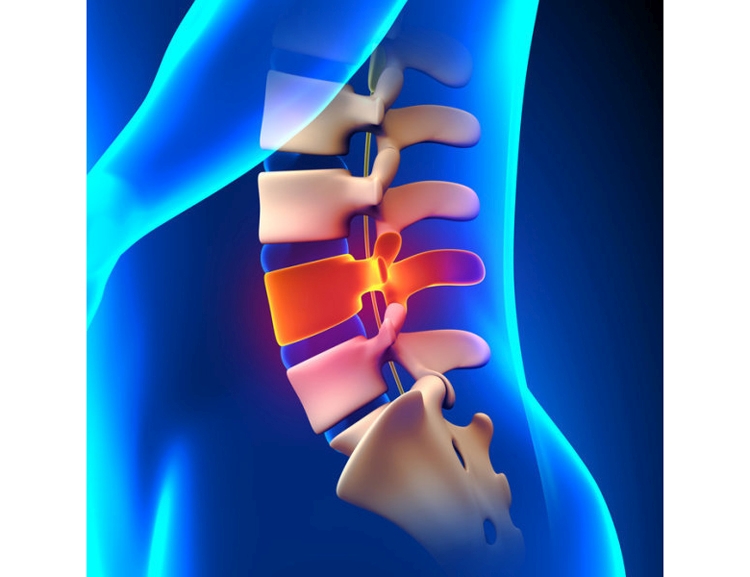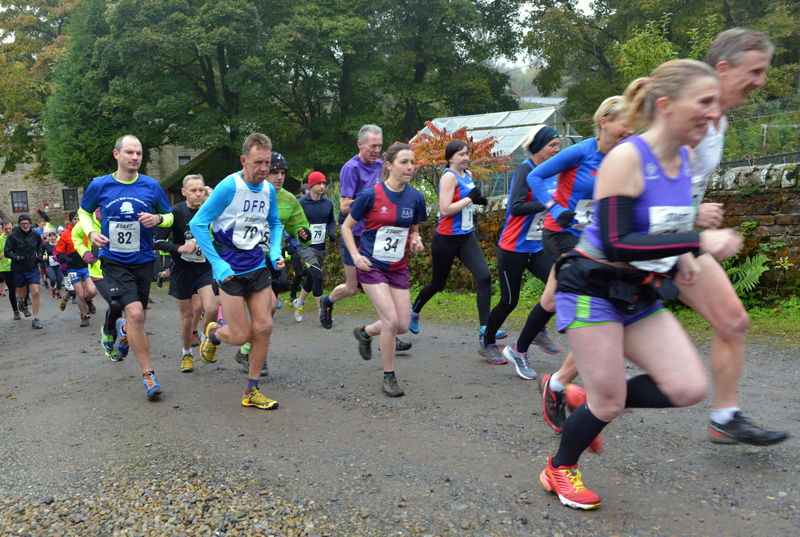You are viewing 1 of your 1 free articles. For unlimited access take a risk-free trial
Painkiller use in sport: are you a junkie athlete?

Andrew Hamilton looks at research on the growing popularity of analgesic medication use by athletes, and the considerable hazards involved…
We’ve all been there; as the day of a big event approaches, you develop a niggling soreness, which you know will affect performance. The question is how to proceed? Do you take a break to allow for recovery but risk losing fitness in the run up to your race, or do you plough on regardless? And if it’s the latter, should you take pain killers to get you through training – and on the day itself? And what about older athletes who often suffer from age-related joint soreness? Can the routine use of anti-inflammatory pain medication such as Ibuprofen be helpful to get you through?Surprising findings on pain-relief medication
As an ex-triathlete, researcher and writer, I spend a lot of my spare time searching through the literature on the latest sports science research. A few days ago, I came across a newly-published paper by Czech scientists on the prevalence of non steroidal anti-inflammatory drug (NSAID) use in endurance athletes(1). This study investigated the prevalence of NSAID consumption immediately before, during and immediately after a mountain bike race and compared NSAID consumption in two different MTB competitions and across 131 competitors.The two competitions were a three-stage mountain bike and a 24-hour mountain bike race both held in the Czechia in 2017. Using questionnaires administered to all the competitors, no less than 10% had consumed NSAID medication at least once during the competition day (immediately before, during or immediately after the race). Of these, half of the competitors had consumed NSAID after the race – presumably to try and reduce the amount of post-exercise muscle soreness (also known as delayed-onset muscle soreness – DOMS) following the race. Interestingly, the average age of NSAID users was significantly higher than non users, suggesting that older athletes were more likely to resort to NSAID use.
NSAID popularity
While you might think that these figures for NSAID use are surprisingly high, other recent studies have suggested that NSAID use is even more common in other endurance athletes such as runners, cyclists and triathletes. In one study, researchers looked at NSAID use among 238 participants at the Ultra Mallorca Serra de Tramuntana (Mallorca, Spain) - an ultra-endurance mountain event, with runners participating either in a 112km ultra, a 67km trail, or a 44km marathon competition(2). Among the study participants, 48.3% reported taking NSAIDs at least for one of the time-points considered: before, during and/or immediately after the competition, with more positive responses (having taken medication) found for the ultra runners (60.3%) than for the trail runners (49.2%) or the marathon runners (35.5%). Similar finding for the prevalence of NSAID use have also been found among triathletes(3).If you’re more of a recreational athlete, you might assume that the use of NSAIDs before and during competition is more the preserve of ‘hardcore’ endurance athletes, such as Ironman triathletes and ultra runners. However, you’d be wrong because a study published earlier this year looked at NSAID use in recreation triathletes, runners and cyclists, whose training and racing schedules were much more modest(4). Of a sample of 129 of amateur athletes, 88 (68%) reported using NSAIDs in the previous 12 months. Broken down by sports, the percentage figures for NSAID use in the past year were (see figure 1):
- Triathletes – 84.8%
- Runners - 70.9%
- Cyclists - 52.5%
Figure 1: NSAID use in triathletes, runners and cyclists

Dark red = NSAID use; Pink = no NSAID use
Overall, ibuprofen was the most popular drug, but it was evident that there was a lack of knowledge of adverse drug reactions, with only 26% of use advised by a doctor or pharmacist. In yet another study – this time of 76,654 half-marathon and marathon runners published earlier this month – no less than 12.2% reported regularly using analgesic/anti-inflammatory medication before or during races(5).
Painkillers and performance
Putting aside the risks of painkillers (which we’ll come to later), what are the perceived and actual benefits of taking medications such ibuprofen and paracetamol prior to, during and after exercise? These fall into two distinct but overlapping categories:- Performance enhancing: where analgesics such as paracetamol might intrinsically actually enhance exercise performance.
- Pain-relieving: where exercise performance that would otherwise be impaired by pain is improved or (in severe cases) able to continue at all.
Another possible mechanism of painkillers such as paracetamol is by action on the central nervous system. By suppressing pain and discomfort, they may allow athletes to work nearer to their physiological limits for longer, thereby enhancing performance. The evidence for this effect is a little stronger; a study on sprint cycling found that the ingestion of 1.5 grams of paracetamol prior to three sets of 8 x 30-second sprints resulted in a significantly greater mean power output, especially during sprints 6, 7 and 8(8). Similarly, a study published earlier this year on subjects who were asked to perform repeated maximal knee extension exercises found that ingesting 1 gram of paracetamol one hour beforehand resulted in greater average force generation, especially in the later stages of the test when fatigue was setting in(9).
Not all painkillers are equal
While there’s some evidence that pre-exercise paracetamol might help improve maximal exercise performance by its action on the central nervous system, there’s no such evidence for the benefits of ibuprofen, which possesses a different mode of action. In a study published just last month, researchers investigated whether pre-exercise ibuprofen could enhance maximal exercise performance(10). Using a similar protocol as in the knee extension study above, 13 physically active males completed 60 × 3-second maximum voluntary contractions of the knee extensors interspersed with a 2-second passive recovery period, on two occasions – once after consuming 400mgs of ibuprofen and once after an inert placebo. In the second part of the study, 16 active males completed two 3-minute all-out tests against a fixed resistance on an electrically-braked cycle ergometer, again with and without prior ingestion of 400mgs of ibuprofen. The results from both parts of the study showed that there were absolutely no performance benefits of pre-exercise ibuprofen; the average power/force generated in the knee extension exercises and the cycling test was similar, and in both tests, neuromuscular fatigue declined at a similar rate.The (BIG) downsides of analgesics
At this point, you may be thinking to yourself that while not all the studies for the performance benefits of analgesics such as ibuprofen and paracetamol are positive, if they can make exercise more comfortable, what harm can they possibly do? Unfortunately, the answer from recent studies is a great deal. In a study by German scientists, researchers investigated the use of over-the-counter analgesics in marathon runners and the relation between analgesic use, dosage and any adverse events during and after the 2010 Bonn marathon(11).The 7048 participants in the event were invited to complete an online questionnaire after the race. Of these, 3913 runners completed and returned their questionnaires. The results were as follows:
- *There was no significant difference between the premature race withdrawal rate in the analgesics cohort and the cohort who did not take analgesics ('controls').
- *Despite this, withdrawal because of gastrointestinal adverse events was significantly more frequent in the analgesics users than those who took none; the analgesics cohort had an almost 5-times higher incidence of an adverse event.
- *The likelihood of an adverse event in the runners increased significantly with increasing analgesic dose.
- *Nine respondents reported temporary hospital admittance: three for temporary kidney failure (post-ibuprofen ingestion), four with bleeds (post-aspirin ingestion) and two cardiac infarctions (post-aspirin ingestion). None of the controls reported hospital admittance.
Another study looked at the aggravation of exercise-induced intestinal injury by ibuprofen in athletes(12). It has long been know that strenuous exercise leads to a degree of (temporary) intestinal injury, which is thought to be at least partly responsible for phenomena such as abdominal bloating and cramps. However it seems that using painkillers such as ibuprofen can exacerbate this effect. In this study, researchers investigated oral ibuprofen administration before exercise on gastrointestinal integrity and barrier function in healthy individuals. Nine healthy, trained men were studied on four different occasions:
1) 400 mg ibuprofen taken before cycling,
2) Cycling without ibuprofen
3) 400 mg ibuprofen taken at rest
4) Rest without ibuprofen
The results showed that both ibuprofen consumption and cycling resulted in an increase in small intestinal injury. However, when ibuprofen was taken prior to cycling, these levels of injury were significantly higher than any of the other conditions. The authors went onto to conclude that: “The use of non-steroidal anti-inflammatory drugs such as ibuprofen prior to exercise is not harmless and should be discouraged.”
A further study looked at ibuprofen (400mgs taken every four hours) use in 89 participants during a 50-mile ultramarathon footrace(13). Ultra-endurance events are known to increase the risk of acute kidney injury (see figure 2); the scientists in this study therefore sought to establish whether ibuprofen use further increased this risk. The runners were split into two groups: those who took ibuprofen and those who took an inert placebo, and markers of kidney injury were measured before and after the event. The results showed that not only did the ibuprofen users experience a greater incidence of acute kidney injury, they also experienced a greater severity of symptoms when it did occur. Echoing some of the sentiments above, these researchers concluded that: “Consideration should be taken before ingesting NSAIDs during endurance running as they could exacerbate kidney injury.”
Figure 2: Acute kidney injury

Most damning of all…
It’s clear that regardless of any possible benefit analgesics can bring to help get through an event or simply continue with training, they may pose a considerable risk to an athlete’s health. But there’s possibly an even bigger reason why athletes should think long and hard about pre or in-exercise use of analgesics such as paracetamol and ibuprofen, and that’s because taken regularly, they may blunt training adaptation. In plain English, the training you perform to increase your fitness and perform better may be less effective when combined with analgesic use.In a recently published study, a team of British and Swedish scientists looked at the acute and chronic use of these drugs in relation to exercise performance and the development of long-term training adaptations(14). Anti-inflammatory drugs such as ibuprofen, and painkillers such as paracetamol are known to affect tissue protein turnover. Moreover, they also dampen down key enzymes in the body involved with producing inflammation – in particular the ‘cyclooxygenase (COX) enzymes. However, while excessive inflammation is bad, some inflammation is good, being a natural part of post-exercise recovery and regeneration of body tissues such as muscle and bone. These inflammatory processes are an essential part of remodelling muscle tissue and training adaptation. Excessively dampening down this process could therefore inhibit training adaptation. As the researchers report, these types of pain killers HAVE been reported to interfere with muscle growth and strength gains in response to chronic resistance training in young individuals. In a nutshell, if you regularly use painkillers such as ibuprofen and paracetamol, you may not be deriving the full benefits of a training programme as your body may fail to properly adapt to the training stimulus.
Practical advice
What is the advice for athletes who use or have considered using analgesics as part of a strategy to train and/or compete? Our team of writers and researchers like wherever possible to give positive advice to our readers. However, an examination of the recent evidence suggests that when it comes to painkiller use, caution is the name of the game here. Here are some guidelines to help you through the maze:- *Before resorting to self-prescribed painkillers, seek advice from a doctor or physiotherapist. The pain you’re experiencing may indicate a condition that requires complete rest, a course of physiotherapy or further investigation. Simply training through pain while using painkillers can make some conditions much more problematical in the longer term. You should also seek advice on the best type of pain medication, the dosage and the timescale over which it can be used.
- *If you have a history of gastric problems (indigestion, irritable bowel, nausea during exercise) or kidney conditions, you should refrain from taking pre-exercise anti-inflammatory medication such as ibuprofen.
- *The performance enhancing effects of analgesics are far from clear and come with costs. There’s no evidence that ibuprofen offers any performance benefits, while the evidence for paracetamol is patchy. There are far better and safer supplements such as caffeine! The use of analgesics also has to be weighed against the risk of adverse events, and athletes should also be aware that the use of medication where there is no medical need and solely to enhance performance amounts to nothing more than doping – ie cheating. To make matters worse, the regular use of painkillers during training may blunt your training adaptation.
- *Older athletes who suffer from chronic post-exercise soreness should consider using natural anti-inflammatory foods such as turmeric (curcumin) and tart cherry juice (see links at end of this article).
- *The message from this article should be very clear; consider analgesic medication your very last resort – not your first!
- Front Physiol. 2018 Sep 10;9:1272. doi: 10.3389/fphys.2018.01272. eCollection 2018
- Sports (Basel). 2017 Jan 29;5(1). pii: E11. doi: 10.3390/sports5010011
- Br J Sports Med. 2011 Feb;45(2):85-90
- Int J Pharm Pract. 2018 Jul 18. doi: 10.1111/ijpp.12469. [Epub ahead of print]
- Clin J Sport Med. 2018 Sep;28(5):427-434
- Exp Physiol. 2014 Jan;99(1):164-71
- Int J Physiol Pathophysiol Pharmacol. 2013 Sep 10;5(3):190-3
- Eur J Appl Physiol. 2014 Jan;114(1):41-8
- Eur J Appl Physiol. 2018 Mar;118(3):595-605
- Appl Physiol Nutr Metab. 2018 Aug 10. doi: 10.1139/apnm-2018-0432. [Epub ahead of print]
- BMJ Open. 2013 Apr 19;3(4). pii: e002090
- Med Sci Sports Exerc. 2012 Dec;44(12):2257-62
- Emerg Med J. 2017 Oct;34(10):637-642
- Scand J Med Sci Sports. 2018 Aug 13. doi: 10.1111/sms.13275. [Epub ahead of print]
Newsletter Sign Up
Testimonials
Dr. Alexandra Fandetti-Robin, Back & Body Chiropractic
Elspeth Cowell MSCh DpodM SRCh HCPC reg
William Hunter, Nuffield Health
Newsletter Sign Up
Coaches Testimonials
Dr. Alexandra Fandetti-Robin, Back & Body Chiropractic
Elspeth Cowell MSCh DpodM SRCh HCPC reg
William Hunter, Nuffield Health
Keep up with latest sports science research and apply it to maximize performance
Today you have the chance to join a group of athletes, and sports coaches/trainers who all have something special in common...
They use the latest research to improve performance for themselves and their clients - both athletes and sports teams - with help from global specialists in the fields of sports science, sports medicine and sports psychology.
They do this by reading Sports Performance Bulletin, an easy-to-digest but serious-minded journal dedicated to high performance sports. SPB offers a wealth of information and insight into the latest research, in an easily-accessible and understood format, along with a wealth of practical recommendations.
*includes 3 coaching manuals
Get Inspired
All the latest techniques and approaches
Sports Performance Bulletin helps dedicated endurance athletes improve their performance. Sense-checking the latest sports science research, and sourcing evidence and case studies to support findings, Sports Performance Bulletin turns proven insights into easily digestible practical advice. Supporting athletes, coaches and professionals who wish to ensure their guidance and programmes are kept right up to date and based on credible science.













